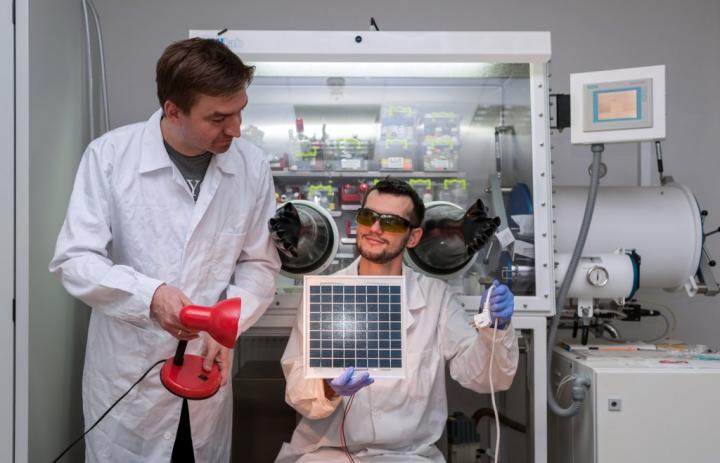A group of chemists from two leading institutions have demonstrated a perovskite solar cell with a reduced number of structural defects. The cells were produced using ‘mechanochemistry’, whereby reactions between solid compounds are activated by mechanical force – essentially the same concept as grinding ingredients in a mortar.
The group worked with polycrystalline halide perovskites, comprised of methylammonium, lead and iodide. The researchers state that their process could also be used to create other perovskite structured materials for specific applications.
The process is described as follows: “Two powders, e.g. white methylammonium iodide CH3NH3I and yellow lead iodide PbI2, are placed in a mill equipped with a few steel balls. Then, we grind them for several dozen minutes and… we pour out a homogeneous black powder of the perovskite (CH3NH3)PbI3, which can be directly used for the construction of photovoltaic cells.
The PAS researchers were keen to point out the simplicity of the process and its potential for low cost application: “You do not need to use high temperature, organic solvents, or worry about waste,” explains Marcin Saski, a PhD student at PAS. “The whole process is really fast and efficient. It is green chemistry,”
The materials produced by PAS were assembled and tested at EPFL in the laboratory of renowned chemist Michael Grätzel. Scientists were able to produce a perovskite layer just 300nm thick. Results published in the journal Applied Materials & Interfaces show that their best device peaked at 17.5% efficiency, stabilizing at 16.8%.
The steel ball mill process produced a highly homogenous perovskite layer, with fewer defects that are seen in many previous perovskite devices. This could lead to better reliability, and eventually a solution to some of perovskite’s issues with swift degradation.
“An important property characterizing the quality of a photovoltaic cell is the amount of electrical charge accumulating at the boundary of individual cell layers. If there is too much, the cell undergoes degradation more rapidly,” explains EPFL’s Daniel Prochowicz. “Perovskites obtained by mechanochemistry formed a very homogeneous layer, which reduced the number of defects in the structure impairing the work of the cell and reduced the amount of charge deposited on the surface.”
So far the researchers have been unable to fully explain why the mechanochemical process worked better. The most likely explanation, it seem, is the absence of a solvent, which in other processes can become incorporated into the structure and leave a defect-causing residue.
This content is protected by copyright and may not be reused. If you want to cooperate with us and would like to reuse some of our content, please contact: editors@pv-magazine.com.




By submitting this form you agree to pv magazine using your data for the purposes of publishing your comment.
Your personal data will only be disclosed or otherwise transmitted to third parties for the purposes of spam filtering or if this is necessary for technical maintenance of the website. Any other transfer to third parties will not take place unless this is justified on the basis of applicable data protection regulations or if pv magazine is legally obliged to do so.
You may revoke this consent at any time with effect for the future, in which case your personal data will be deleted immediately. Otherwise, your data will be deleted if pv magazine has processed your request or the purpose of data storage is fulfilled.
Further information on data privacy can be found in our Data Protection Policy.